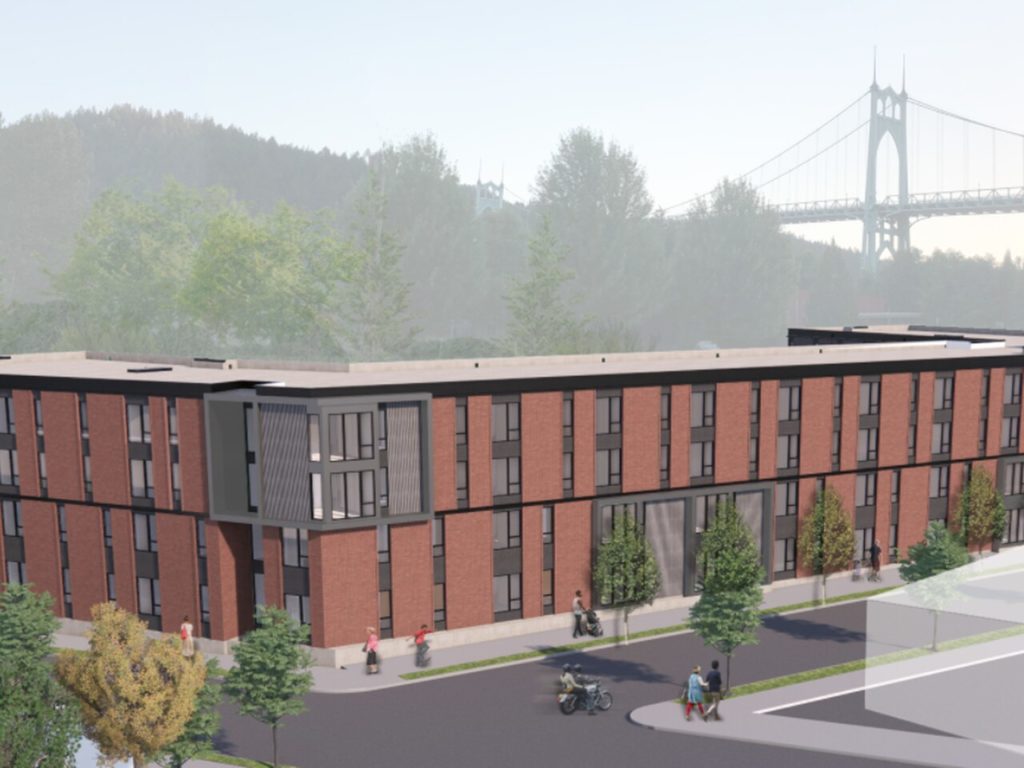
Every week, the Bureau of Development Services publishes lists of Early Assistance applications, Land Use Reviews and Building Permits processed in the previous week. We publish the highlights. This post covers January 18th, 2021 to January 24th, 2021.
Early Assistance has been requested by Barry Smith Architect for a project at 3333 SW US Veterans Hospital Rd:
PROPOSAL The proposal is develop housing on Marquam Hill to eliminate commuting for residents and support personnel of the Hospitals and Level 1 Trauma Center. Housing and services are provided for the employment providers adjacent to the site. Household Living will be classified as Residential Group R1 and R2 for temporary and permanent residences by the Oregon State Structural Specialty Code. Household Living is mixed within structures in a combination of SRO and apartment configurations. Business, Retail Sales and Service and Assembly Occupancies are developed to provide support services for residents, guests and neighbors. Parking is provided and shared throughout the site.
Early Assistance has been requested for a project at 15031 SE Division St:
Construction of one L-shaped 4-story (66 unit) multi-family building with structured parking, bicycle parking, community room and leasing office.
A Pre-Application Conference has been scheduled to discuss an expansion of DoveLewis at 1947 NW Overton St:
Multi-story building with parking, different configuration options being considered (to serve wholly or partially as an expansion for DoveLewis’s existing main facility). Note PR 16-277190 ZCL
A project with two buildings North of 5904 SE 89th Ave has been submitted for building permit review:
Single PDF: 3 story 11 unit apartment building and associated site work. Main floor includes main entrance, trash enclosure with water heater room. Short term bike park outside and long term parking within dwelling units. Lot 14.
Single PDF: 3 story 11 unit apartment building. Main floor includes main entrance, trash enclosure with water heater room. Short term bike park outside and long term parking within dwelling units. Lot 15.
A building permit was issued to MWA Architects for Cathedral Village at 6520 N Salem Ave (formerly 8614 N Crawford St):
New 4 story, 110 unit Multi-family apartment building and associated site work. w/20-168121-MT, 20-168124\27-CO (2 demos)
A building permit was issued to Studio 3 Architects for Provi 3 at 5505 NE Glisan St:
Construct new 4 story (22) unit apartment building with interior trash room and fire riser room; associated site work
Ahh wonderful. Another overscaled monolith warehouse to pack all the poor folks in. Geez what happened to designing for humans treated like humans instead of commodities for the developers profit.
“Overscaled”: You mean high density? The approach a city needs to reduce sprawl while still providing housing for more people that need it?
“what happened to designing for humans treated like humans instead of commodities for the developers profit.”: While I don’t disagree with this complaint, it’s not much different than the market-rate apartments built in every major city every day.
At least the building could have been broken into two or more smaller masses to provide light to the street instead of a continuous shadow along the whole block. The market rate apartments are just as bad at this. Density doesnt have to equal full block monoliths which seem to be the case coming from the developers and architects. The architects should know better.
I agree with you, RH, that two or more smaller buildings would be better than one big one. Unfortunately, such a change, I suspect, would be a considerably more expensive way to go. It increases exterior surface areas while reducing interior volume; multiplies the total number of needed shared facilities like lobbies, stairways, elevators, etc.; and for these reasons, probably increases overall maintenance costs. This is the dilemma we face: In general, smaller structures are more humane, but larger ones are more cost effective.
So everything should be based on cost not quality of life in well designed spaces. Duplication of some of the elements you mentioned is not necessarily the case. It just takes a willingness and creative thought instead of relying on the same quick solutions for the architects to make an easy buck and the developers cramming in as much profit as possible in their projects.
All ignorant about the quality of life the residents will experience being canned up in these monoliths. When then new wears off then we are stuck with the result for years.